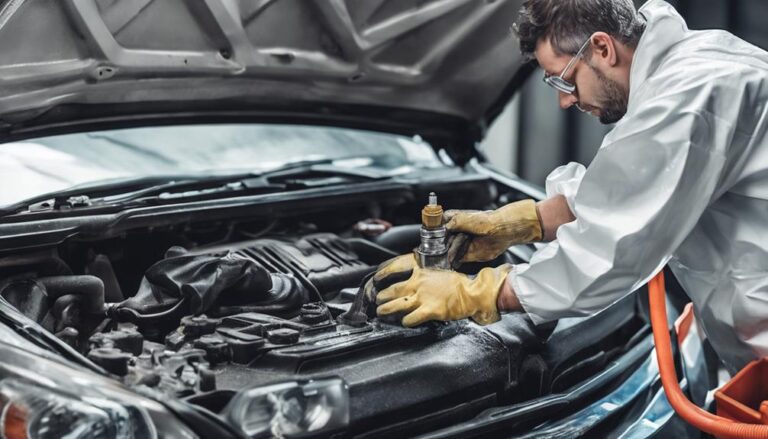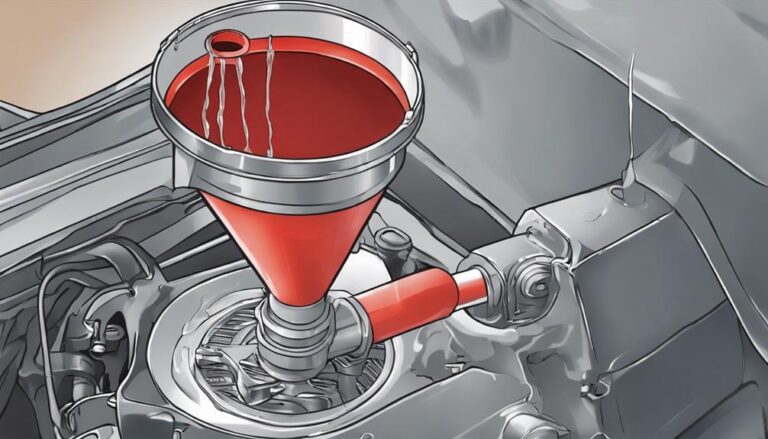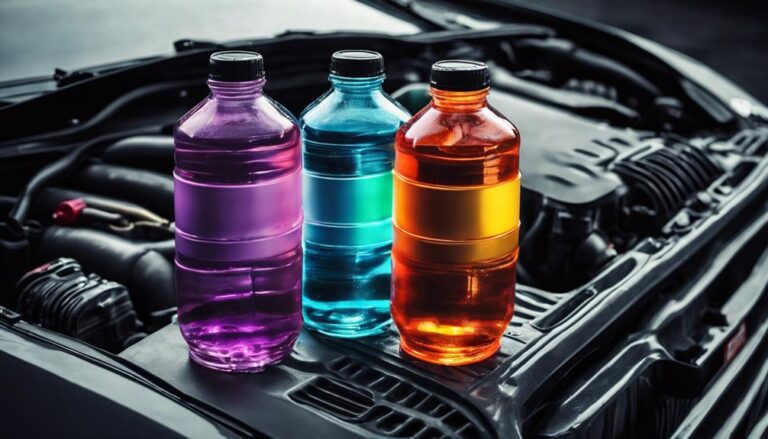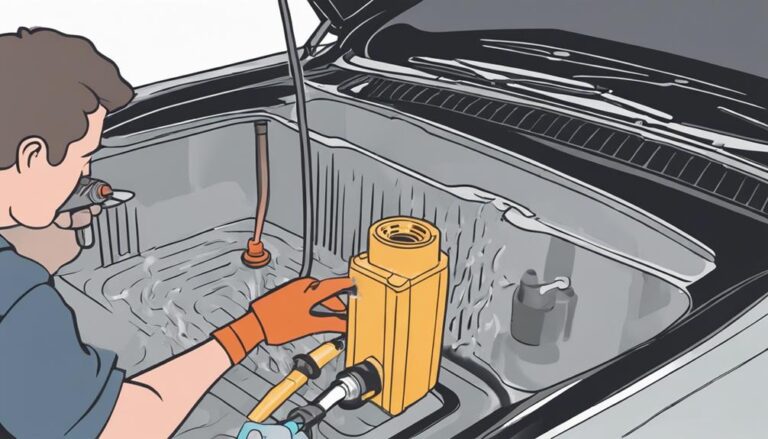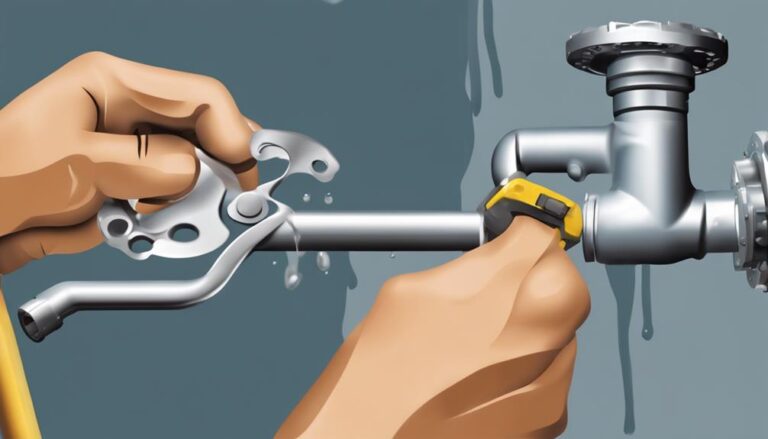7 Best Tips for Checking Coolant Level in Cars
You might think checking your car's coolant level is a hassle, but it's a simple task that can save you from costly engine repairs. Ensuring your vehicle's coolant is at the right level is essential for optimal performance and longevity.
By following these 7 best tips, you'll not only maintain your engine's health but also potentially avoid breakdowns on the road.
So, let's start with the first tip – the importance of coolant level check in your car.
Key Takeaways
- Regularly check coolant levels to prevent engine damage and ensure optimal performance.
- Inspect coolant color and reservoir overflow for contamination signs.
- Monitor coolant levels every 3 months or before long trips for safe vehicle operation.
- Respond promptly to warning lights, steam, or leaks indicating low coolant levels to prevent overheating.
Importance of Coolant Level Check
Regularly checking the coolant level in your car is a critical maintenance task that helps safeguard your engine from overheating and potential damage. Coolant maintenance is key to ensuring optimal engine efficiency.
Low coolant levels can lead to issues with crucial components such as the water pump, head gasket, and cylinder head. By monitoring and topping up the coolant regularly, you contribute to maintaining proper engine temperature regulation, which is essential for preventing malfunctions.
Proper coolant levels are vital for safe and efficient vehicle operation. Neglecting coolant levels can result in overheating, which can cause significant damage to your engine and compromise its performance. To uphold engine efficiency and longevity, make checking your coolant level a routine part of your vehicle maintenance.
Coolant Level Check Frequency
You should check the coolant levels in your car regularly, approximately every 3 months or 3,000 miles, to maintain optimal engine performance.
Ensuring proper coolant levels can prevent engine overheating and potential damage, ultimately saving you from costly repairs and extending your engine's lifespan.
Before embarking on long trips or facing extreme weather conditions, it's highly recommended to verify that your coolant levels are adequate to keep your vehicle running smoothly.
Check Regularly
Performing regular checks on your coolant level ensures optimal engine performance and helps prevent costly repairs due to overheating issues. Checking your coolant level at least once a month is crucial for maintaining the correct levels. Here are some key points to consider:
- Inspect Coolant Color: Ensure the coolant is the right color and not contaminated.
- Check for Coolant Overflow: Look for any signs of coolant overflow in the reservoir.
- Pre-Trip Inspection: Before long journeys, check the coolant level to avoid issues on the road.
- Extreme Temperature Changes: Inspect the coolant level during temperature fluctuations to account for expansion or contraction.
Regular monitoring and maintenance of your coolant level are essential to avoid engine damage and keep your vehicle running smoothly.
Importance of Levels
To ensure optimal engine performance and prevent costly repairs, it's crucial to adhere to a monthly schedule for checking the coolant levels in your car. Coolant effectiveness is directly related to maintaining the correct levels in your vehicle.
Engine cooling is a critical function, and low coolant levels can lead to overheating, potentially causing water pump, head gasket, and cylinder head issues. By regularly checking and topping up the coolant, you're safeguarding the overall health and performance of your engine.
Proper coolant levels are essential for preventing accidents and malfunctions while driving. Make it a habit to check your coolant levels at least every month to ensure your engine is running smoothly and to avoid any unnecessary complications.
Signs of Low Coolant Levels
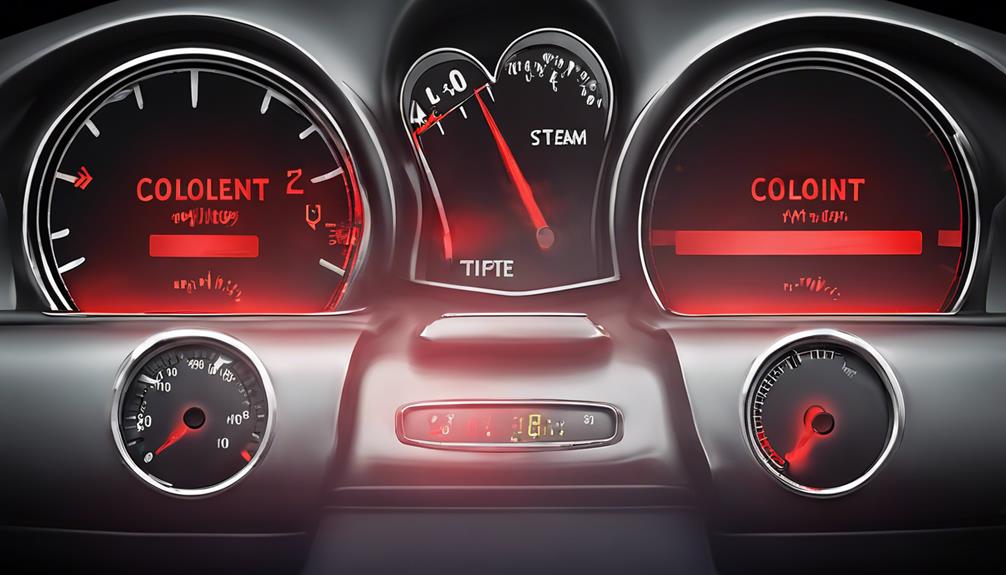
If you notice warning lights illuminating on your dashboard or the temperature gauge rising rapidly, these are clear signs of low coolant levels and potential engine overheating.
Steam emanating from the engine compartment is another indicator of insufficient coolant.
Keep an eye out for coolant leaks under your car or around the radiator cap, as they can signify low coolant levels needing immediate attention.
Warning Lights
Wondering how to identify low coolant levels in your car quickly and effectively? When it comes to warning lights, your dashboard holds critical indicators for troubleshooting coolant levels. Here are some essential points to consider:
- Keep an eye out for coolant lights or temperature gauge warnings, as these can signal low coolant levels.
- Ignoring these warnings may trigger the check engine light or cause the temperature gauge to spike, indicating a potential problem.
- Regularly checking and topping up coolant levels can prevent these warning lights related to low coolant.
- Consult your owner's manual for specific indications related to coolant lights and diagnostics.
Stay proactive in monitoring these signals to avoid engine overheating and costly damage.
Engine Overheating
Regularly monitoring your coolant levels is crucial to preventing engine overheating incidents in cars. Engine overheating is a common sign of low coolant levels and can lead to severe damage in components like the water pump, head gasket, and cylinder head. Insufficient coolant causes the engine to run hotter than normal, impacting overall performance. To avoid such issues, prioritize cooling system maintenance by checking and topping up coolant regularly. Maintaining optimal coolant levels not only prevents damage but also ensures that your engine operates within the recommended temperature range. By staying proactive in monitoring your coolant levels, you can effectively prevent engine overheating and costly repairs.
| Signs of Low Coolant Levels |
|---|
| Engine overheating |
| Damage to water pump |
| Compromised head gasket |
| Impact on cylinder head |
| Decreased engine performance |
How to Safely Check Coolant
To safely check the coolant in your vehicle, always ensure the engine is cold to prevent burns and injuries. Here are some steps to safely check your coolant level:
- Locate the Coolant Reservoir: Find the coolant reservoir under the bonnet, typically labeled with 'coolant' for easy identification.
- Check the Coolant Level: The coolant level should sit between the 'min' and 'max' marks on the transparent reservoir.
- Use the Correct Coolant: Ensure you use the appropriate coolant type and mix it with de-ionized water in the recommended ratio, usually 50% coolant and 50% water.
- Topping up Safely: When topping up the coolant, use a funnel to reach the 'max' line. This helps maintain proper coolant levels and prevents engine overheating.
Top-Up Coolant Correctly
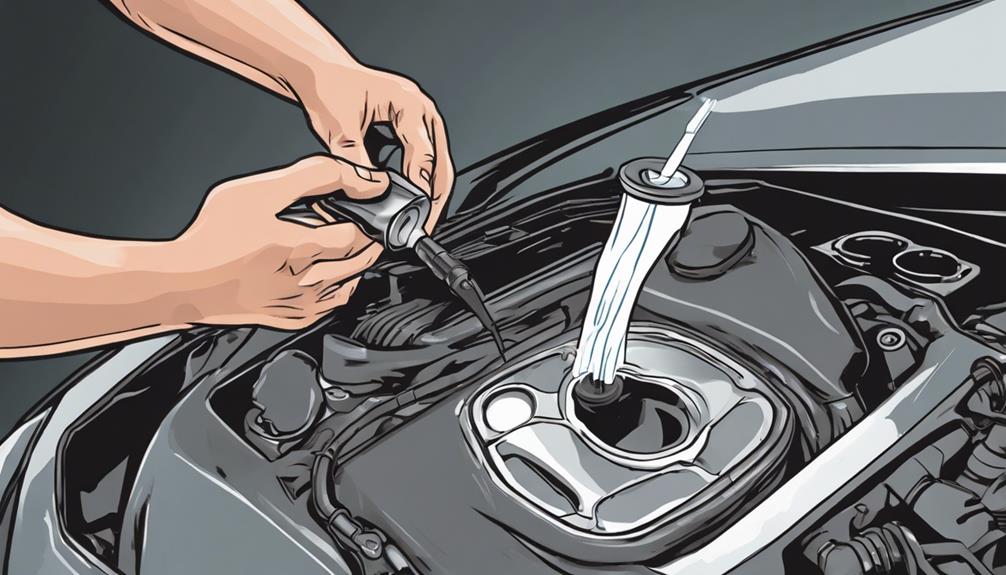
Ensure you select the appropriate coolant type specified for your vehicle to correctly top up the coolant level. Proper mixing and maintaining the correct ratio are crucial steps in topping up your coolant. The typical blend ratio is a 50% coolant and 50% water mixture for most vehicles. When adding coolant, always use de-ionized water and mix it according to the manufacturer's specifications for optimal performance.
To visually represent the importance of proper mixing and correct ratios, refer to the table below:
| Coolant Topping Up Steps | Description | Importance |
|---|---|---|
| Select Correct Coolant Type | Choose the coolant specified for your vehicle. | Prevents damage to engine |
| Mix Coolant with De-ionized Water | Combine coolant with de-ionized water in the right proportion. | Maintains cooling efficiency |
| Fill Reservoir to 'Max' Line | Pour the mixture into the reservoir using a funnel to avoid spills. | Avoids overfilling |
Following these steps will ensure you properly top up your coolant, enhancing your vehicle's cooling system's efficiency and longevity.
Importance of Using Quality Coolant
Using high-quality coolant is essential for maintaining optimal engine performance and preventing potential overheating issues. Quality coolant plays a crucial role in the overall health of your vehicle's engine. Here are some key reasons why investing in quality coolant is beneficial for the maintenance and performance of your car:
- Benefits of Quality Coolant:
- Proper engine temperature regulation to prevent overheating.
- Optimal performance as per manufacturer's recommendations.
- Corrosion protection for engine components, ensuring longevity.
- Enhanced heat transfer efficiency within the engine for better performance.
Maintaining the quality of coolant in your vehicle is akin to providing it with the best care possible. Quality coolant not only safeguards your engine from overheating but also contributes to its longevity and efficient operation. Therefore, choosing the right coolant and ensuring its quality through regular checks is a crucial aspect of vehicle maintenance.
Professional Maintenance Recommendations

When maintaining your vehicle's coolant system, professional mechanics stress the importance of adhering to recommended coolant levels and types for optimal engine function and longevity. Coolant inspection should be done when the engine is cold to prevent burns and ensure accurate readings. Following the manufacturer's instructions on coolant type and mixing ratios is crucial for peak engine performance. Coolant reservoirs, often transparent, allow for easy visibility of coolant levels between the 'min' and 'max' marks.
Professional guidance emphasizes adding the correct coolant type in the right ratio, usually a 50% coolant and 50% water mix, to maintain proper cooling system function. Regular coolant checks by professionals can prevent irreversible engine damage and ensure safe vehicle operation. By entrusting your coolant system maintenance to experts, you can extend the life of your engine and avoid costly repairs. Remember, preventive measures guided by professionals are key to keeping your vehicle running smoothly.
Frequently Asked Questions
What Is the Safest Way to Check the Coolant Level in Your Car?
Ensure safety by checking the coolant level when the engine is cool. Locate the reservoir under the bonnet. Assess the level between 'min' and 'max' marks in the transparent reservoir. Use proper coolant type and mix.
Should You Check Coolant Level Hot or Cold?
For accurate readings and safety, always check the coolant level when the engine is cold. Avoid risks and inaccurate measurements by waiting for the engine to cool down. Checking when the engine is hot can lead to safety hazards.
What Is the Best Way to Check Coolant Concentration?
To check coolant concentration, mix coolant and water in a 50/50 ratio. Use coolant testing strips for accurate readings. Maintaining the right antifreeze levels is crucial for engine health. Regularly verify the concentration to prevent overheating and corrosion.
How Do You Check Coolant in a Car?
When checking coolant in a car, start by locating the coolant reservoir. Make sure the level falls between 'min' and 'max.' If it's low, top it up with the correct coolant mixture. Prevent overheating and engine damage.
Conclusion
In conclusion, ensuring the proper coolant level in your car is vital to prevent engine overheating and maintain optimal performance. By following the recommended guidelines for checking and topping up coolant, you can keep your vehicle running smoothly and efficiently.
Remember, taking care of your coolant system is a small but crucial step in ensuring the longevity of your car. So, stay vigilant and stay cool with regular coolant level checks.


